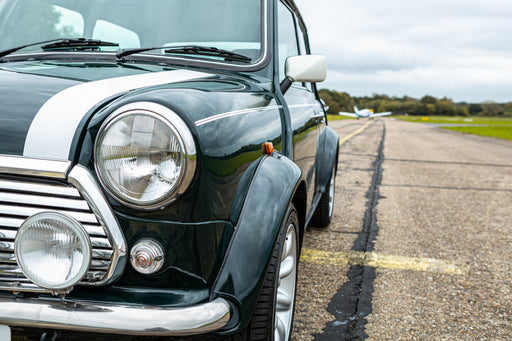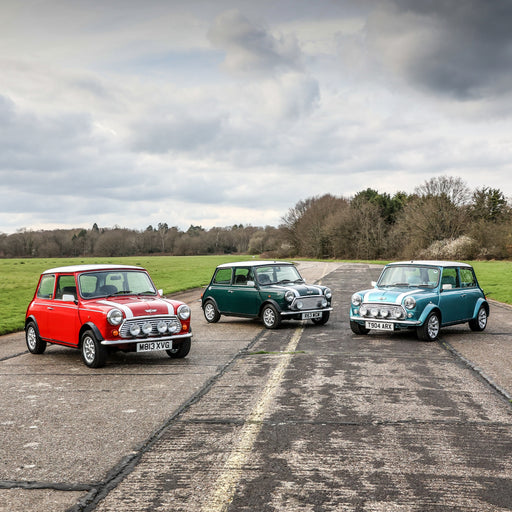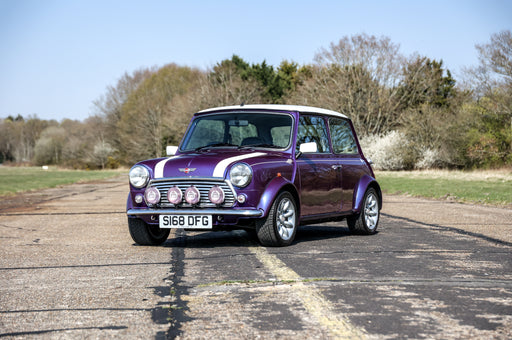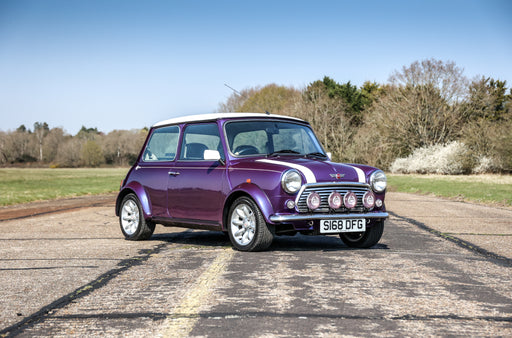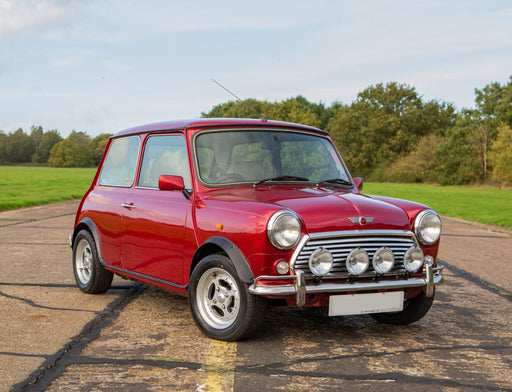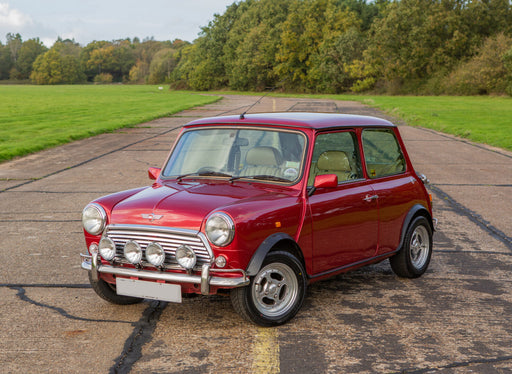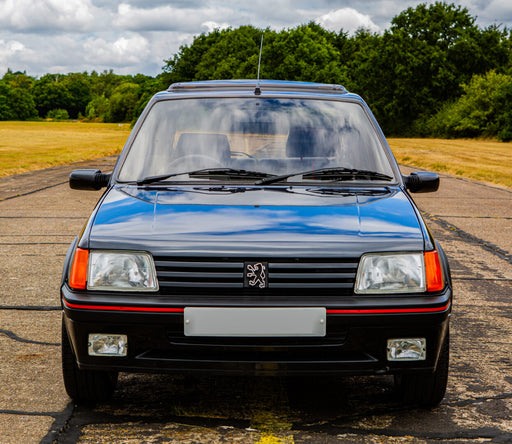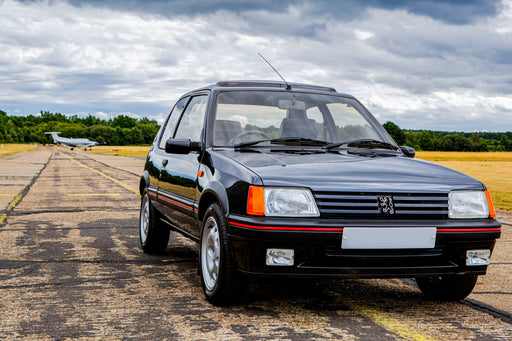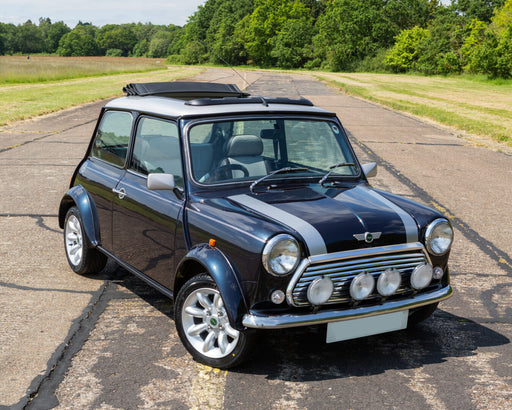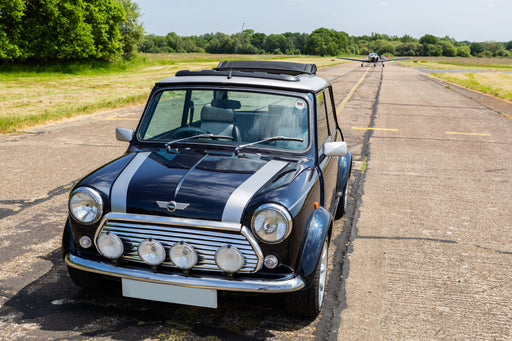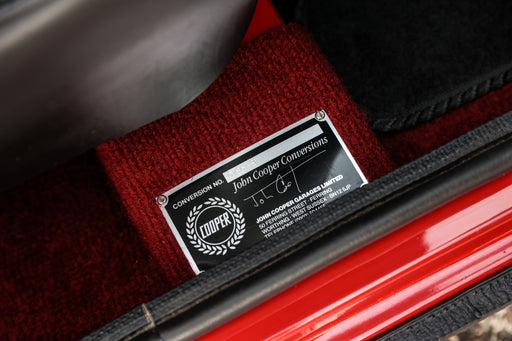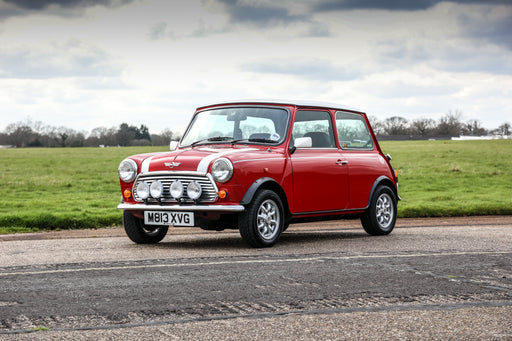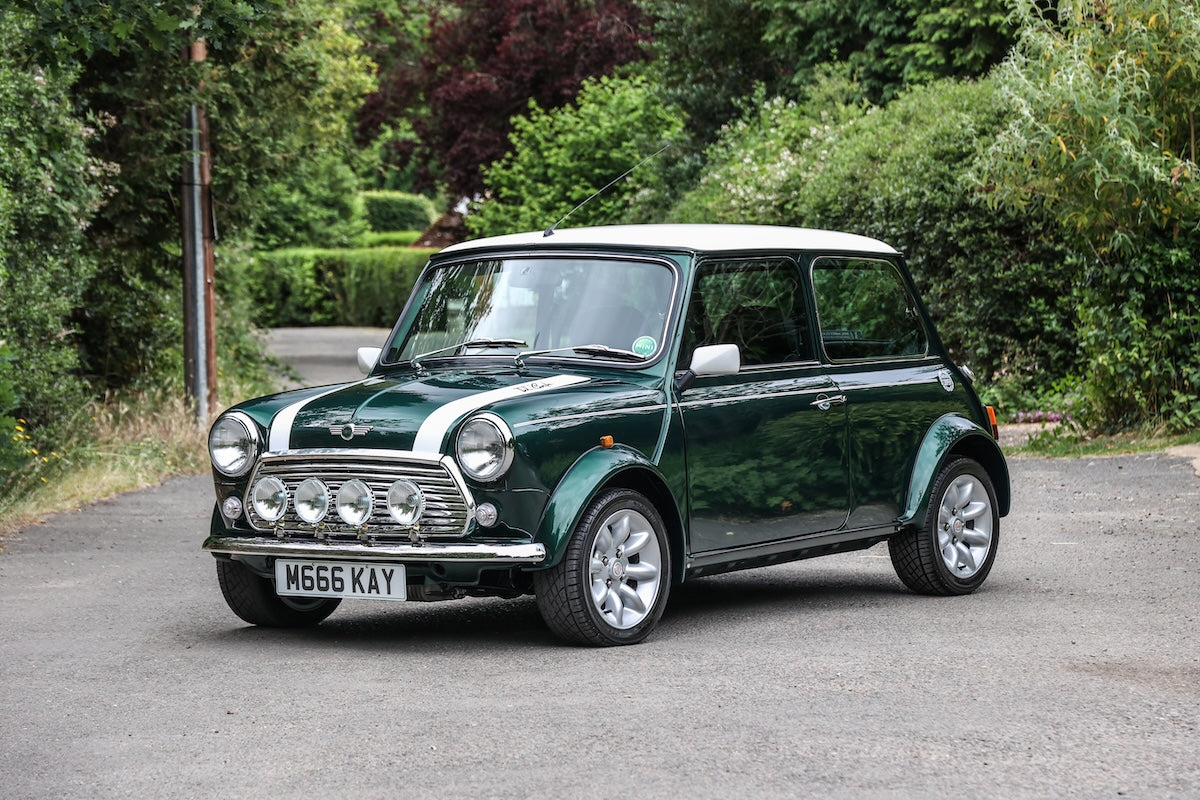
 >
>

15 things to check before buying a used Classic Mini
Whether it’s your first classic car or you’ve already got a few tucked away in the garage, buying a used Classic Mini is a special kind of experience. Having said that, it’s not without its pitfalls. Minis are full of charm but they’re also known for rust, dodgy repairs, and quirks that are easy to overlook if you’re new to them.
This fast, focused guide covers the key things to look for before handing over your hard-earned cash. Some of these apply to used cars in general, but many are specific to the Mini and could save you from unexpected bills—or buying a car that’s more filler than metal.
Let’s get into it.
1. Rust in all the usual (and unusual) places
Classic Minis and rust go hand in hand. The most common trouble spots? Scuttle panel, under the headlights, around the windscreen rubbers, A-panels, sills, doorsteps, boot floor, and rear valance. Don’t just look for surface rust, bubbling paint can mean deeper problems underneath.
2. Vented sills—not oversills

As this image shows, original Minis came with vented sills that have six little open indentations (flutes). If those flutes are closed, the car likely has oversills—cheaper replacements that are often used to hide rot. Oversills trap moisture and can mask serious corrosion.
3. Signs of past repairs or accident damage
Check panel gaps. Uneven gaps or mismatched paint can mean the car’s had a knock or a bodged restoration. Look for welding patches in the boot or floor pans, and check the quality of any previous repairs.
4. Valid MOT and MOT history
Even if the Mini is MOT-exempt due to its age, it’s still worth having a valid MOT for peace of mind. Look up its MOT history online and pay attention to past advisories. If issues haven’t been addressed, you’ll likely be picking up the tab.
5. Engine health
Listen for knocking, ticking, or strange noises. Check the oil. If it’s low or looks dirty, that’s not a great sign. When you first fire up the engine, listen closely. Does it start easily from cold? Any rattles, clunks, ticking or metallic sounds? Let the car warm up and see if it holds temperature properly without overheating. Once the engine has warmed up, the idle speed should be 1,000rpm. Minis can be noisy little things, but you’ll start to pick out what sounds healthy and what doesn’t.
6. Gearbox condition and synchros
Minis are known for weak gear synchros, especially second gear. If there’s any crunching between shifts, it might need a gearbox rebuild. Test drive it and check all gears engage smoothly.
7. VIN and body number checks

Make sure the VIN on the V5C matches the number on the car (the VIN plate is found on the O/S inner wing). Also, look for the VIN number on the scuttle panel (seen in the image above). If it’s missing, the scuttle has been replaced.
8. Original spot welds on inner wings
These are a great sign of originality. If the welds are missing or look disturbed, it could be a sign of panel replacement. Also, on the bonnet slam panel should be the factory ‘body’ number.
9. HPI check
Before viewing the car, run an HPI check. It’ll tell you if the Mini’s been written off, stolen, scrapped, or has outstanding finance. A small cost upfront can save you a massive headache later.
10. Mileage and service history
If it’s being sold as a low-mileage example, make sure there’s documentation to back it up. Stamped service books, old MOTs, and invoices all help build a clearer picture of the car’s history.
11. Rusty subframes and underside condition
Front and rear subframes are known to rot. Have a look underneath with a torch, or better yet, get it on a ramp. If the subframes are rusted or patched up, factor in the cost of replacements.
12. Suspension and tyres
Run your hand over the tyres to check for uneven wear. It can indicate poor alignment or worn suspension. Minis use rubber cones instead of springs, and these can collapse over time, making the ride harsh.
13. Interior wear and condition

While not a deal-breaker, a shabby interior might hint at how the car’s been treated overall. Check for worn seats, torn headlining, water stains, and cracked dashboards. Original seats are not easy to get hold of. See the Mini interior above for an example of a Classic Mini in excellent condition.
14. Cooling system and antifreeze
Check for leaks around the radiator and hoses. The coolant should be clean and the right colour, not brown or oily. A Mini that overheats in traffic could have cooling system problems that need sorting. Also, check that the cabin heater is fully operative. If it is not blowing out hot air, it is likely blocked and will need replacing.
15. Doors that drop or don’t shut right
Minis are small, but the doors are heavy. Worn hinges can cause the doors to sag or be tricky to shut. In some cases, it can point to more serious body flex or shell weakness.
The good news? Minis are one of the best classic cars you can buy. Whether you’re after a tidy daily runaround, a head-turning weekend toy, or a rare collector’s piece, there’s a Mini out there to suit your lifestyle and budget. With this checklist in hand, you’ll be better equipped to tell the difference between a hidden gem and a potential money pit.
Our services
Do you have a rare Mini to sell? Or are you looking to buy one? We offer Mini appraisals, fair pricing, and fast collection for sellers – sell your Classic Mini.
If you're searching for a rare Mini, contact us or sign up to our email list to receive stock alerts when new models arrive.
Latest Classic Cars For Sale
classic minis wanted
We are actively seeking classic Minis in excellent condition, ideally with low mileage and a detailed history, especially models such as the Cooper...
View details1999 classic mini cooper s touring by john cooper garages
As featured in MiniWorld Magazine. In 1997, John Cooper Garages launched two new exciting iterations of the iconic Mini Cooper S: the Cooper S Tour...
View details1996 classic mini 'cooper s touring' by miniworld & john cooper garages
A unique opportunity to purchase a MiniWorld Magazine feature car specially converted by John Cooper Garages. This Mini was supplied to Link House ...
View details1989 peugeot 205 gti 1.9
First registered on 29th September 1989. 84,000 miles from new. Driven a mere 5,000 miles in the past 15 years. A collector-quality example. Meticu...
View details2001 classic mini cooper sport 500
The Cooper Sport 500 was the final edition of the classic Mini, released in a strictly limited production run of 500 units. They were only availabl...
View details1994 classic mini john cooper si+, only 7695 miles from new!
As featured in MiniWorld Magazine. This Mini Cooper was originally supplied by Hannants of North Walsham, Norfolk on 17th December 1994 and is pr...
View details
